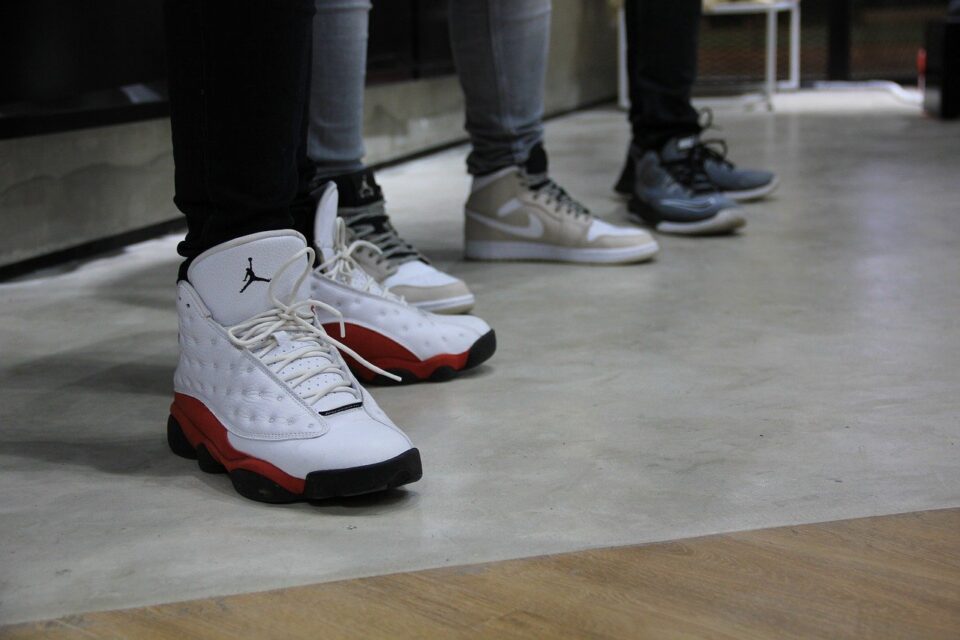You’re filled with excitement as you open your box of new Jordans that came in the mail. When you get a look at the shoes, you realize that something isn’t right.
The stitching around the logo is frayed. You’ve also noticed that some of the thread is coming undone on the heel of the shoes. The box won’t even close all the way.
You may have gotten a good deal shopping from that second-hand seller, but they ripped you off by giving you an ingenuine pair of shoes.
Want to know how to tell if Jordans are real so you don’t get fooled again? Keep reading to learn what you should be on the lookout for when you get around to buying a new pair of sneakers.
Look at the Logo
A genuine pair of Air Jordan Future sneakers will have a crisp Jumpman logo on them. If you have a pair of fakes, you’ll notice that the edge around the logo is faded and falling apart.
As far as color and placement go, that can vary depending on the types of Jordans you bought. We recommend looking up a picture of them up online to compare the logos.
If they look the same, you know that the bad quality of the logo is all in your head. If there are differences, have an imposter on your hands.
The Shoe Box
Authentic Jordan sneakers come in a durable box. The lid should close all the way without any room for gaps. You’ll notice the Jumpman logo on the side and top of the box.
If there is no logo or the print looks pixilated around the edges, that should raise a few red flags. The color and design of the box will vary from shoe to shoe, but one thing is true.
It should be one uniform color. If the packaging has some kind of gradient going on, you don’t have an authentic pair of shoes.
The last place to check is the sticker on the side of the box. All the information displayed should match the description of your shoes.
If it looks like someone peeled the sticker off one box and placed it on another, you’ve got a problem. The sticker on the real box is placed on smoothly without any air bubbles.
Shoe Tag
All Jordans have a tag sewn to the back of the tongue. Depending on the model of the shoe, you may also find it sewn to the side. Most of the time, the tag is framed by a durable white border. The border on the fakes is more on the flimsy side.
The font on a fake tag is often blurry and difficult to read. An authentic pair of Jordans display the French translation of “made in China” on the tag. The fakes do not.
Stitching
You pay a lot of money for Jordans, so you best believe the stitching is high-quality. There shouldn’t be any loose thread or fraying.
Each stitch is done in a specific way with even spaces. The thread on the fakes is half-hazard. The place where the inconsistencies are the most noticeable is the heel.
The authentic Jordans have a sturdy double stitch that runs from the tag to the back of the shoe. It’s not a design choice that’s easy to do the right way. Most fake manufacturers can only pull off a single stitch.
Hourglass Shape
When buying Jordans, always look at the shape of the shoe before adding it to your shopping cart. The authentic ones have a slight curve to them that’s hard to notice unless you’re really looking at them. It resembles a perfect hourglass shape.
The fakes don’t have the same curve. In fact, if you stare closely at them, you’ll see that they’re completely straight.
Bulkiness
We’re going to keep going on the shape train. The fakes are a lot bulkier than the real deal. It’s noticeable when you’re looking at the shoe from the front.
Actual Jordons have a tight feel to them. It better supports your foot as you go about your day. The fakes are a bit on the looser side with a lot more extra room in the toe region.
Nike Swoosh
Jordans have the Nike swoosh on the side of the shoe. This is true no matter if you’re looking at the fakes or the real deal. The way to tell them apart is to look at the shape of the swoosh.
The end of the Nike mark is a lot sharper on the actual Jordans.
Sneakers Perforations
The last thing to look at is the perforations on the toe of the shoes. The holes on the front of the fakes are large, and they aren’t punched all the way through. It’s the number one indicator of poor machinery.
The perforations on the fakes also seem to be scattered around at random. The ones on the actual shoes are more uniform.
How to Tell If Jordans are Real or Fake
Jordans are too expensive to waste your money on ones that aren’t authentic. Manufacturers can be crafty, but there are always methods that you can use to tell the real ones apart from the faulty knock-offs.
We hope that you’re able to use this guide to learn how to tell if Jordans are real or fake. For more buying tips that will prevent you from getting scammed, feel free to explore the rest of our blog.

